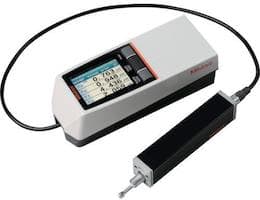
-----
Surface roughness conversion
Q. I always receive the surface roughness measurement in Rmax but our company use Ra method. Are there any conversion factor to convert Rmax to Ra or vice versa?
I find all the handbooks in our library but no answer.
Would anybody tell me the conversion factor I'd very appreciate.
Agnes LukIOU-AL - HK
2000
A. Agnes:
You should visit www.predev.com/smg/ Surface Metrology Guide
Good Luck,
Bill BoatrightHoughton International - Raleigh, North Carolina
2000
Q. I'm familiar with Ra measurements, but is anyone familiar with SRa measurements, that could give me the definition of that abbreviation? Thanks.
Jim SherburneStamping Engineer - Smyrna, Tennessee, USA
2007
Q. What is the definition of Rmax?
What is the difference between Ry Din and Rmax JIS.
EMPLOYEE - INDIA
February 3, 2009
Q. I want conversion of following surface finish in Ra
1) Ry100
2) Ry6.3
3) Ry12.5
It is shown on Japanese drawings and part material is SAE52100 (Bearing steel)
Best Regards,
Bearing Industry - Thane, Maharashtra, India
June 18, 2009
A. Hi, Vasant. The main reason there are so many different surface measurement standards is that they all measure different things that may be important for different reasons.
Consider for example, that the anticipated life of a polymer shaft seal might depend on the average roughness, whereas an electroplating shop knows that plating cannot fill scratches, it accentuates them -- so a plating shop uses a roughness scale that talks about the deepest scratch, not the average.
You can't actually convert a value in one scale to the other because they measure things that tend to "track each other" but aren't the same thing, like torque vs. horsepower, or people's height vs. weight. The average weight of people who are 6 foot tall is obviously greater than the weight of people who are 5 foot tall, but you can't covert height to weight. These surface finish "conversions" are rough estimates that include a large factor of safety (which proves expensive and always works against you, and still may not be 100% safe). The best approach is to obtain an instrument that measures what you are trying to measure.
But good explanations, pictorials, and 'conversion' information can be found at www.misumi.co.th/products/technical/press/pdf/pr1167_1168.pdf
Good luck.
Regards,

Ted Mooney, P.E.
Striving to live Aloha
finishing.com - Pine Beach, New Jersey
Ted is available for instant help
or longer-term assistance.
June 10, 2009
Q, A, or Comment on THIS thread -or- Start a NEW Thread
